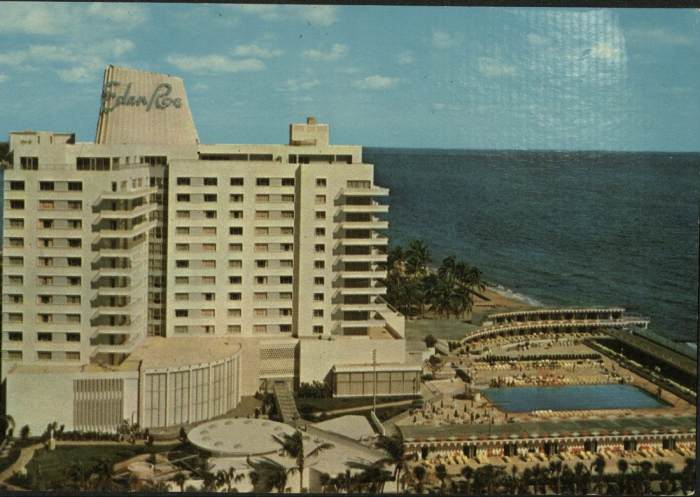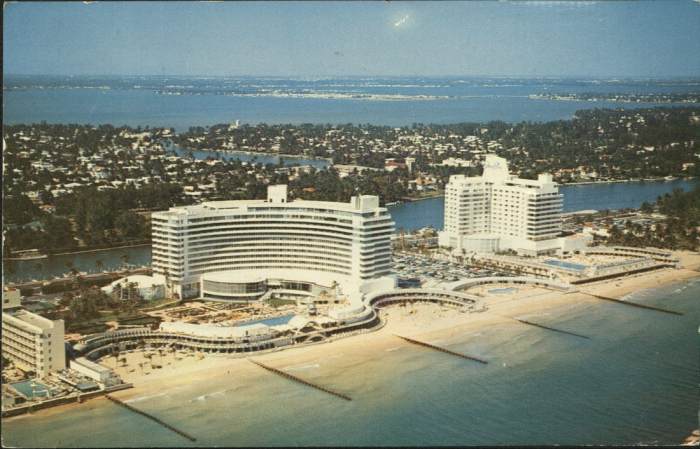Fontainebleau hotel corp. v. forty-five twenty-five inc – Fontainebleau Hotel Corp. v. Forty-Five Twenty-Five, Inc. stands as a pivotal case in the annals of trademark law, shaping the legal landscape surrounding trademark protection, unfair competition, and trade dress. This case, which reached the esteemed halls of the Supreme Court, has left an enduring legacy, influencing subsequent legal decisions and shaping the way courts interpret and apply trademark principles.
The case revolves around the Fontainebleau Hotel, a renowned luxury hotel in Miami Beach, Florida. The hotel’s distinctive curved shape and distinctive design elements became the subject of a trademark dispute when Forty-Five Twenty-Five, Inc., a neighboring hotel, constructed a strikingly similar building.
Case Overview
The case of Fontainebleau Hotel Corp. v. Forty-Five Twenty-Five, Inc. involved a dispute over the use of the Fontainebleau name and trade dress by a competing hotel.
Fontainebleau Hotel Corp. owned the Fontainebleau Hotel in Miami Beach, Florida, which was a well-known and iconic hotel. Forty-Five Twenty-Five, Inc. opened a hotel in Las Vegas, Nevada, and used the name “Fontainebleau Las Vegas” and a similar trade dress to the Miami Beach hotel.
Legal Principles

The case raised issues of trademark law, unfair competition, and trade dress.
Trademark law protects the exclusive use of a mark to identify goods or services. Unfair competition law prohibits businesses from engaging in deceptive or unfair practices that harm competitors.
Trade dress refers to the overall appearance of a product or service, including its packaging, design, and color scheme.
District Court Decision

The district court ruled in favor of Fontainebleau Hotel Corp., finding that Forty-Five Twenty-Five, Inc. had infringed on its trademark and engaged in unfair competition.
The court found that the Fontainebleau name was a strong mark and that Forty-Five Twenty-Five, Inc. had used it in a way that was likely to cause confusion among consumers.
The court also found that the trade dress of the Las Vegas hotel was similar enough to the trade dress of the Miami Beach hotel to be confusing.
Eleventh Circuit Decision

The Eleventh Circuit reversed the district court’s decision, holding that Forty-Five Twenty-Five, Inc. had not infringed on Fontainebleau Hotel Corp.’s trademark or engaged in unfair competition.
The court found that the Fontainebleau name was not a strong mark and that Forty-Five Twenty-Five, Inc. had used it in a way that was not likely to cause confusion among consumers.
The court also found that the trade dress of the Las Vegas hotel was not similar enough to the trade dress of the Miami Beach hotel to be confusing.
Supreme Court Decision

The Supreme Court granted certiorari and reversed the Eleventh Circuit’s decision, holding that Forty-Five Twenty-Five, Inc. had infringed on Fontainebleau Hotel Corp.’s trademark and engaged in unfair competition.
The Court found that the Fontainebleau name was a strong mark and that Forty-Five Twenty-Five, Inc. had used it in a way that was likely to cause confusion among consumers.
The Court also found that the trade dress of the Las Vegas hotel was similar enough to the trade dress of the Miami Beach hotel to be confusing.
Popular Questions: Fontainebleau Hotel Corp. V. Forty-five Twenty-five Inc
What was the central legal issue in Fontainebleau Hotel Corp. v. Forty-Five Twenty-Five, Inc.?
The case centered on whether the Fontainebleau Hotel’s distinctive design elements constituted a protectable trademark and whether Forty-Five Twenty-Five, Inc.’s use of similar design elements constituted trademark infringement and unfair competition.
How did the Supreme Court rule in Fontainebleau Hotel Corp. v. Forty-Five Twenty-Five, Inc.?
The Supreme Court held that the Fontainebleau Hotel’s design elements were not inherently distinctive but had acquired distinctiveness through extensive use and advertising. The Court found that Forty-Five Twenty-Five, Inc.’s use of similar design elements created a likelihood of confusion among consumers and constituted trademark infringement.
What is the significance of Fontainebleau Hotel Corp. v. Forty-Five Twenty-Five, Inc. in trademark law?
The case established the importance of acquired distinctiveness in trademark protection and clarified the standards for determining trademark infringement based on consumer confusion.